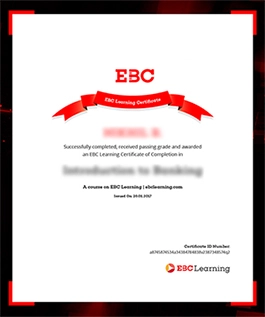Designs
This course is part of a program and cannot be purchased individually.
The commercial success of a product depends on how it grabs the customer's attention. So, it is not only the functional utility and efficiency of the product but appearance also that matters. Say a manufacturer has designed a unique design of a key suitable to fit in a specially designed grove of a lock. Can the manufacturer protect the design? Does it fit under patents, or as artistic work under copyrights, or should it be protected under designs? It would remain a conundrum—if you don't understand the basics of design law and its salient features. This course is designed to help you understand the concept of design and how it is protected under the law. Another interesting feature of this course is that it brings the overlap of design protection vis-a-vis patents, trademarks and copyrights. Other topics covered in the course include—criteria for protection of a design, rights of design owner, piracy of design and remedial measures.
The learning objectives of the module are:
- To identify the need for design protection and the basic concept of design rights.
- To differentiate between copyrights, trademarks and design protection.
- To recognise the procedures involved in protection of designs.
- To analyse issues constituting infringement of designs and its remedial measures.
This course is part of a program and cannot be purchased individually.

Design is not just what it looks like and feels like. Design is how it works.
Steve Jobs- 1. 📕 Introduction
- I. § Relevant provisions
- 1.1 ▸ Introduction
- 1.2 ▸ Evolution of design law
- 1.3 ▸ Meaning and definition of design
- II. ✒︎ Exercise set I
- III. ✒︎ Exercise set II
- 2. 📕 Criteria for design protection
- I. § Relevant provisions
- 2.1 ▸ Subject-matter for protection of design
- 2.2 ▸ Criteria for protection of design (I)
- 2.3 ▸ Criteria for protection of design (II)
- 2.4 ▸ Criteria for protection of design (III)
- 2.5 ▸ Designs excluded from registration
- II. 𝍭 Full text of leading cases
- III. ✒︎ Exercises
- 3. 📕 Overlap of designs, patents, copyrights and trademarks
- 3.1 ▸ Overlap of designs on patents
- 3.2 ▸ Overlap of designs on copyrights and trademarks
- I. 𝍭 Full text of leading cases
- II. ✒︎ Exercises
- 4. 📕 Registration of designs
- I. § Relevant provisions
- 4.1 ▸ Registration of designs
- II. ✒︎ Exercises
- 5. 📕 Rights of a design owner
- I. § Relevant provisions
- 5.1 ▸ Rights of a design owner
- II. ✒︎ Exercises
- 6. 📕 Infringement of designs and remedial measures
- I. § Relevant provisions
- 6.1 ▸ Infringement of designs
- 6.2 ▸ Exceptions to infringement
- 6.3 ▸ Remedial measures to infringement of designs
- II. 𝍭 Full text of leading cases
- III. ✒︎ Exercises
- I. Examination pointers
- ≛ Exam pointers
- Learn More
- Learn More on Designs
Why Take this Course?
Design law is a unique form of IP that protects aesthetic or ornamental character of a product. The course is curated to help you understand the conceptual and procedural aspects of design protection. While your client has spent so much time and effort designing a unique shape of an article, piracy of the design is rather very easy. How do you protect your client's rights against such infringements? What arguments does the defendant take to defend the case of infringement? Take this course to find out more.
This course is part of a program and cannot be purchased individually.
Instructors

Dr Pratima Narayan
Advocate & Mediator, Co-founder, Techlawlogi Consulting LLP
Dr Pratima Narayan has served the legal academia for over 20 years as a visiting faculty at various reputed law schools and business schools. Her expertise lies in areas of commercial contracts, consumer law, e-commerce and Intellectual Property Rights.

Presented by: Dr Charu Mathur
AOR, Supreme Court
Dr Charu Mathur is an Advocate on Record with the Supreme Court of India. She has over 20+ years of rich and diverse expertise in corporate, commercial, civil, criminal and constitutional law matters.

Styles come and go. Good design is a language, not a style.
Massimo VignelliCertificate
Complete this course and exercises to earn a certificate. Share it with your friends, colleagues, and employers.

Limit Reached or Trial Expired
You have reached the limit of 2 audit enrollments or your trial period has expired.



